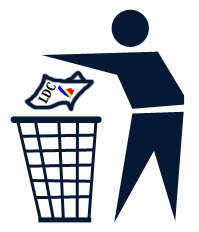From Peoria County’s website:
Peoria County Board Approves Sales Tax Referendum for April Ballot
At a special board meeting earlier this evening [Jan. 27], the Peoria County Board approved the following resolution to place a referendum on the Consolidated General Election ballot this April that asks voters to raise the county’s sales tax rate by 1/4 of 1% to help fund public facilities. If approved by the electorate, the sales tax increase would be applied on retail sales of non-titled goods and would be the equivalent of twenty-five cents (25¢) for every $100 purchased. The referendum includes a sunset clause setting the tax increase to expire twenty (20) years from its effective date of January 1, 2010. Money collected from the increase would be used to help fund construction of the Peoria Riverfront Museum.
Peoria County’s role through the April 7, 2009 consolidated election is not to advocate for or against the passing of this referendum, but rather to educate the public on the sales tax increase and its intent. County Board Members Andrew Rand and James Dillon will host an informational town hall meeting on March 9 at 6:30 p.m. at Bradley University’s Baker Hall Auditorium, Room B51. More information regarding this town hall meeting will be forthcoming.
The resolution is available for download here: www.peoriacounty.org/county/files/get/Jan09PRMrefe.pdf
For more information regarding the referendum, please call County Administration at (309) 672-6056.
I’m especially intrigued by the statement, “Peoria County’s role through the April 7, 2009 consolidated election is not to advocate for or against the passing of this referendum….” Does that mean that they will publish the pros and cons of the sales tax, the way the State published the pros and cons of holding a constitutional convention? Or does it mean that they will give multiple opportunities for the museum to sell the supposed benefits of the tax increase (without any counterargument offered) under the pretense of “providing information”?
Oh wait, I think I have the answer to that question:
Town Hall Meeting re Riverfront Museum Financing
Peoria County Board Members Andrew Rand (District 4) and James Dillon (District 7) will be hosting an informational town hall meeting regarding the Peoria Riverfront Museum and a county-wide temporary sales tax referendum at 6:30 p.m. on Monday, March 9 at Bradley University, Baker Hall Auditorium B51.
Jim Richerson, CEO of Lakeview Museum, will explain the Museum Project, and Erik Bush, CFO, County of Peoria, will explain public and private financing efforts. Scott Sorrel, Assistant to the County Administrator, will present as well. The intent of this town hall meeting is two-fold: to raise awareness of the Museum Project and to educate the public about a county-wide sales tax referendum that will appear on the Consolidated General Election ballot this April. All interested persons are encouraged to attend.
Nope, no advocacy there.

 Tuesday night, the Peoria City Council decided twice not to enforce the Land Development Code (LDC). They made decisions that weren’t just minor variations to the LDC, but decisions that were a fundamental affront to the very intent of the LDC. In fact, they showed an ignorance of and contempt for the intent of the LDC. They have evidently never read the LDC nor the Heart of Peoria Plan on which it was based.
Tuesday night, the Peoria City Council decided twice not to enforce the Land Development Code (LDC). They made decisions that weren’t just minor variations to the LDC, but decisions that were a fundamental affront to the very intent of the LDC. In fact, they showed an ignorance of and contempt for the intent of the LDC. They have evidently never read the LDC nor the Heart of Peoria Plan on which it was based.